What is cannabis wind burn and how to prevent it
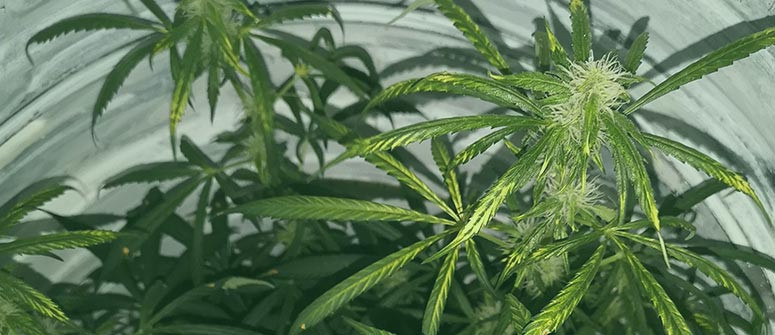
Wind burn may not be the first thing you suspect when you discover discolouration on your cannabis plant's leaves, or notice that they've begun to curl down like a set of claws. But wind can damage cannabis plants both indoors and out. Find out all about cannabis wind burn, including how to fix and prevent it.
Contents:
When growing cannabis, many issues can occur. On the whole, if spotted and treated early, they come and go without causing serious damage. With good practice, many can be avoided in the first place.
This is so with wind burn. Whether it’s strong winds affecting outdoor plants or a fan set too high indoors, cannabis grown in all conditions can succumb to the negative effects of too much wind.
In this article, we look at the causes and symptoms of wind burn, followed by how to treat and prevent it, both indoors and out.
What is weed wind burn?
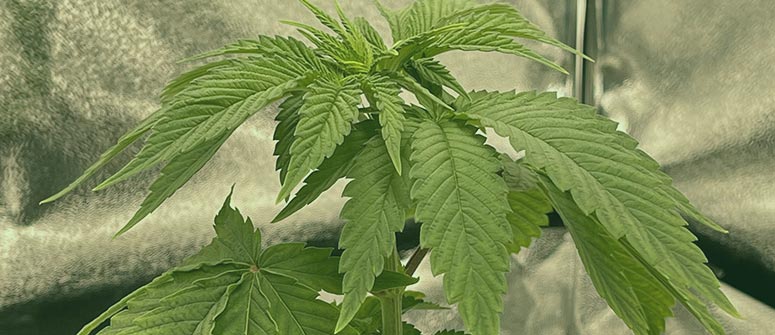
Regarding cannabis, wind burn is the term given to the damage that wind can cause to plants, disturbing their growth. It may surprise you to learn that wind burn isn’t just an issue for cannabis crops grown outdoors, at the mercy of the elements. It can also occur when growing cannabis indoors using fans to generate air circulation.
Of course, strong winds outdoors can blow plants over or break off bud-laden branches, sometimes beyond repair. But wind burn is usually much more subtle than this. Over time, exposure to even fairly mild wind can damage plants. This leads to more than just cosmetic damage, with knock-on effects that could ultimately damage your yield.
The key to preventing and treating wind burn is not to protect your plants from wind entirely; indeed, airflow is crucial to the healthy development of cannabis plants, particularly the stems. Rather, you need to ensure your plants have some wind-free periods so they can recover from any damage, however minor.
Symptoms of weed wind burn
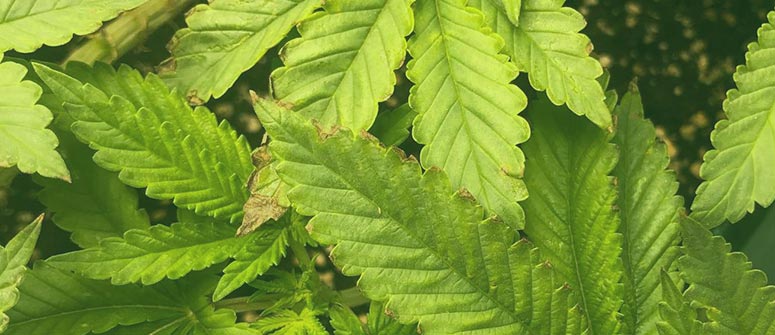
Wind burn has several identifiable symptoms, but these can be confused with other conditions. Indoors, the leaves closest to the fan(s) are likely to exhibit the most extreme signs of burning. Likewise, outdoors, those leaves facing the prevailing wind will suffer the most. If symptoms are evenly spread across the plant, you may be facing a deficiency instead.
Clawing leaves
Usually, cannabis leaves stick out laterally. However, weed leaves will curl down when exposed to too much wind over an extended period. This is known as “clawing”, as they face downward, making the leaf as a whole resemble a set of talons.
This happens as a result of prolonged damage to the leaves’ structure. Healthy amounts of wind will cause micro-damage to weed plants, causing them to become stronger. Too much wind will inflict excessive damage, causing them to be unable to support themselves.
Yellow, brown, and bronze spots on leaves
Leaf discolouration on leaves is a sign of wind burn, but it’s also a sign of many other issues. So, how can you tell the difference?
Primarily, as mentioned, if discolouration chiefly affects the leaves facing in the direction of the wind, then it could well be wind burn. Alongside this, observe if there is a pattern to where the discolouration begins. With some conditions, it’s in the middle of the leaf, whereas with others it’s the outer leaf. With wind burn, it can be anywhere on the leaf.
Burnt leaves
Eventually, discolouration will progress into outright leaf burn. The leaves will appear brown, curled, and crisp. If you get to this point, then you have a problem.
Stunted growth
Long-term exposure to the ill effects of wind will eventually lead to stunted growth. As the plant loses leaves, it will lose the ability to photosynthesise effectively (after a point). More notably, energy will be directed to repairing damage, rather than creating new leaves or flowers, leading to reduced overall growth.
Smaller buds
Of course, stunted growth also means smaller buds. Untreated wind burn will eventually reduce your final yield—so it’s well worth fixing!
How long do the symptoms of wind burn last?
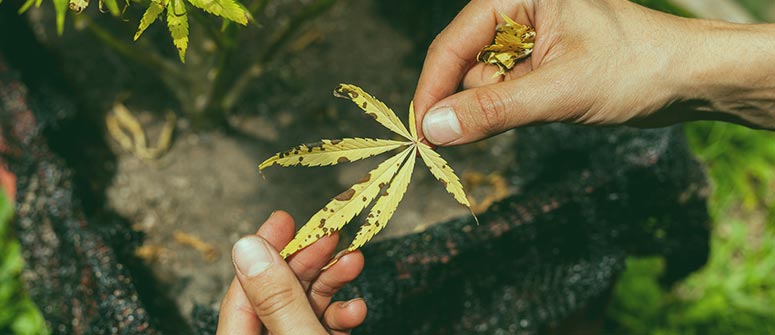
The duration of wind burn symptoms depends entirely on how bad you let it get. In most cases, plants should recover soon after their environment has been optimised—within around a week. In the event of major damage to the plant, however, this could require a long period of recovery; one that may even thwart your chances of a successful harvest entirely. This is why prevention and early treatment is so important.
A cannabis plant that has suffered wind burn will be grateful for a little help when recovering. This includes maintaining a proper nutrient and watering schedule, though don’t be tempted to compensate by overfeeding—this will just replace wind burn with nutrient burn!
If wind burn occurs during the vegetative period, and you’re growing photoperiod marijuana plants, then consider extending the veg period by a week or two to let them recover. Recovery is much easier for cannabis plants before they begin to flower.
How to treat wind burn on cannabis
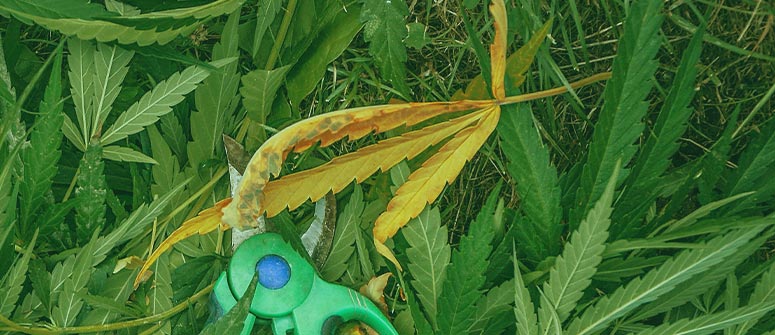
Treating wind burn can be very easy, in certain scenarios. In others, it can be more difficult. Below, we’ve divided solutions into “indoor” and “outdoor”, as they are quite different.
Treating wind burn indoors
As you are in control of an indoor environment, treating wind burn indoors should be very easy and straightforward. Here’s what to do.
Adjust the fans and their settings
First and foremost, adjust the fans! If your plants are experiencing wind burn, then the fans are either too close, too powerful, or both. Move them further away and/or turn the wind speed settings down. A gentle breeze is enough to keep air circulating and to make young plants strong. You don’t need to imitate a hurricane!
Prune your plants
A little damage can be repaired, but a lot will just drain the plant’s resources. It’s worth pruning off any very damaged leaves so the plant directs its energy to those parts that are still healthy, rather than siphoning it off to clawed leaves.
Protect the leaves
You can also make some sort of windbreak to protect the leaves from wind. Though, indoors, another option is probably better. Anything can work as a windbreak; just ensure that it’s stable, and that there are gaps somewhere to allow airflow beneath the canopy.
Treating wind burn outdoors
Treating wind burn outdoors can be a little trickier, as Mother Nature is the one calling the shots. Still, there are a few actions you can take.
Relocate your plants
If you’re growing directly in the ground, or your plants are huge, this may not be an option. But if you’re growing in pots and your weed plants are manageable, then moving them to a better location might be a smart choice. Try to find them somewhere sufficiently sheltered, but that still receives a lot of sunlight.
Prune your plants
As with growing indoors, prune away those leaves that are pretty damaged to help the plant direct its energy toward healthy growth.
Use a windbreak
If you can’t move your plants, then you could make a windbreak to protect them. For this, either buy a windbreak, such as those made for camping, or make one. All it needs to do is create a barrier between the plants and the wind; it needn’t be complex!
How to prevent wind burn on cannabis plants
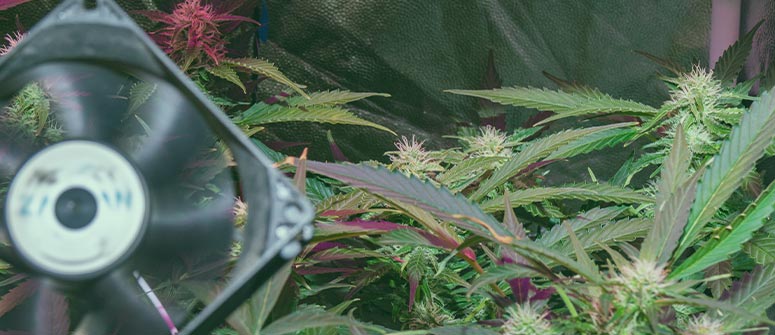
We’ve said it a thousand times: prevention is the best cure! Though you can’t always control every aspect of your grow, you can certainly do your best to keep conditions optimal before wind burn becomes an issue.
Preventing wind burn indoors
Preventing wind burn indoors is really easy; so easy, in fact, that it should rarely occur in the first place. All it takes is a thoughtful approach.
Optimally arrange the grow space setup
Setting up your grow space in an optimal formation is the easiest way to prevent cannabis wind burn indoors. Ensure your fans are the correct distance from your plants, and aren’t blowing too aggressively. Try to ensure that certain plants aren’t being blasted by a stationary wind source while others are barely being exposed to any air circulation. Overcrowding, aka having too many plants in your grow space, puts you at greater risk of experiencing wind burn indoors, so take that into account when planning your grow.
Use oscillating fans
Using oscillating fans (those that turn from side to side) will prevent a single plant, or a single part of a plant, from being exposed to a never-ending gust of the wind. The oscillation alone is often enough to make the difference between wind burn and no wind burn.
Optimally position fans
In the case that your fans do not have an oscillating feature, you can use two fans (or more) and face them toward the walls. To do this, place them at opposite ends of the grow space. Despite facing away from your plants, they will still create adequate air circulation around the space to keep your plants happy and healthy.
Preventing wind burn outdoors
Outdoors, you still have some control in preventing wind burn, but it comes down to the specifics of the space available to you, which you likely cannot change.
Grow in a greenhouse or polytunnel
Growing in a greenhouse or polytunnel protects your plants from the wind. You don’t need an expensive setup; anything that can keep your plants safe from the harsh elements is suitable. Of course, many growers simply don’t have this option. In that case, erecting a simple shelter using available materials, such as plywood and tarpaulins, can work during intense periods of wind.
Choose a sheltered spot
It goes without saying that growing in a sheltered spot helps to protect plants from the effects of wind exposure. However, you can’t just stick them in the most covered corner. The more light plants get, the better they grow. So you must choose a sheltered place that still gets plenty of light—at least 8 hours a day.
How much wind does cannabis need?
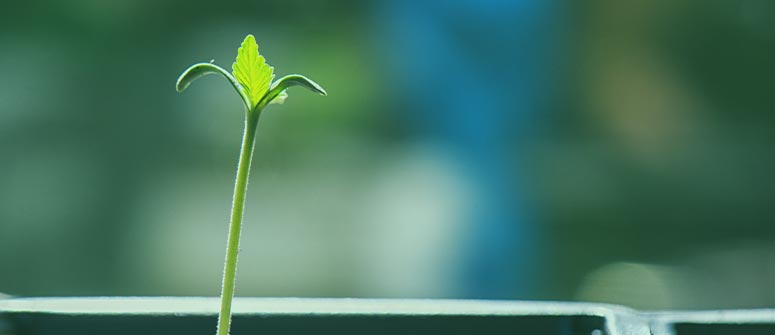
With all that out of the way, it’s worth reiterating that cannabis plants do require adequate airflow. The reason is twofold. First, younger plants need it to become strong. Without it, they can break and fall over. Second, fresh air helps to prevent the growth of mould, especially below the canopy where humidity can get fairly high. This can be an issue during the late-flowering phase in particular. Wind helps to keep things fresh and moving.
Seedlings and clones
Cannabis seedlings and clones benefit from air movement, as it causes tiny breakages in their stems, which, when they repair, grow back stronger—much like muscles and weightlifting. Seedlings grown in totally windless environments will be very weak and will probably fall over eventually, especially if they stretch considerably. The larger they grow, the worse this problem will become. Of course, you don’t want to overwhelm them with wind either, as this can cause them to break before they have a chance to grow strong.
With this in mind, an oscillating fan on a low setting should be enough to strengthen your seedlings’ stems sufficiently.
How to fix a broken cannabis stem
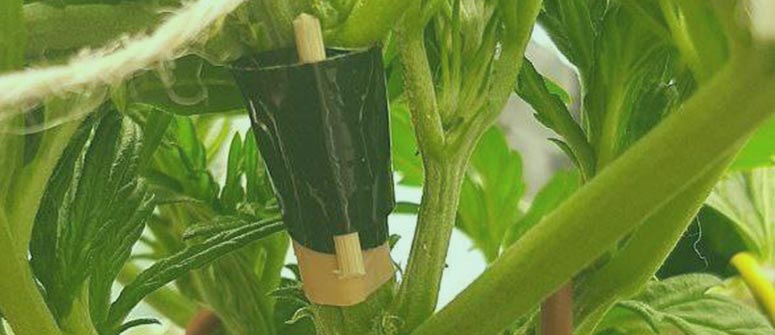
Sometimes, cannabis plants fall over and their stems break. In this case, duct tape can be helpful, if the tissue is totally broken. If it’s just a little damaged, consider tying it to a supporting stake with string or wire. If you have an older plant with a weak stem, this might be necessary to keep it alive when it starts flowering anyway. You can also consider using trellises or tomato cages to provide further structural support.
Cannabis wind burn: Prevention is best
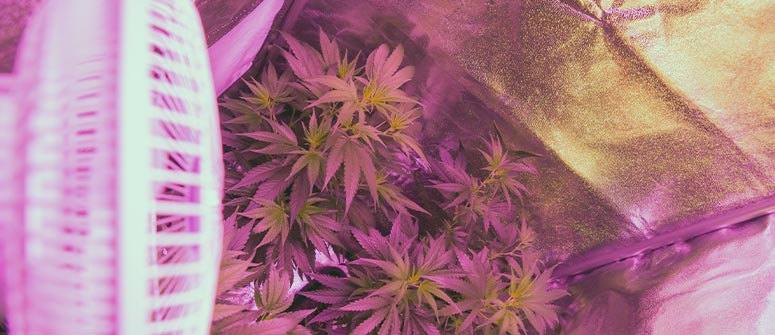
As you can see, preventing wind burn isn’t too difficult, and doing so will make life much easier in the long run. By following the above steps, both indoors and out, you should have a crop that never suffers from wind burn, and as such, a heftier harvest!




